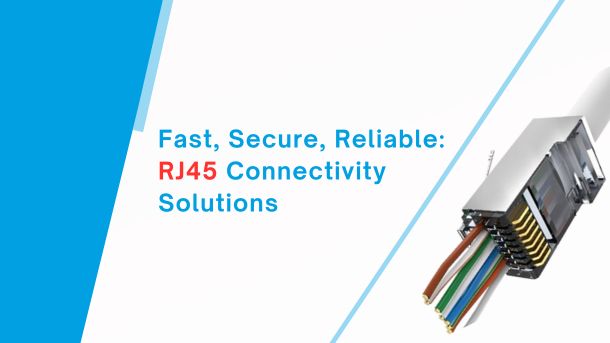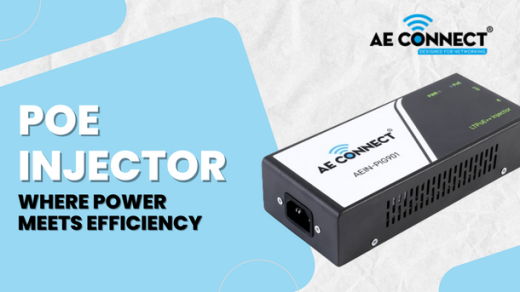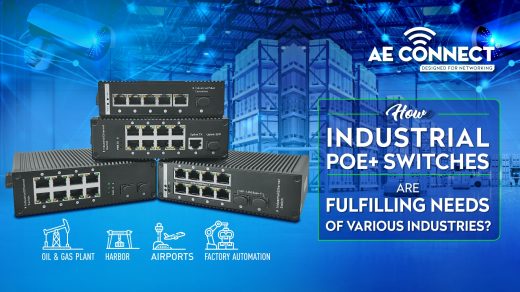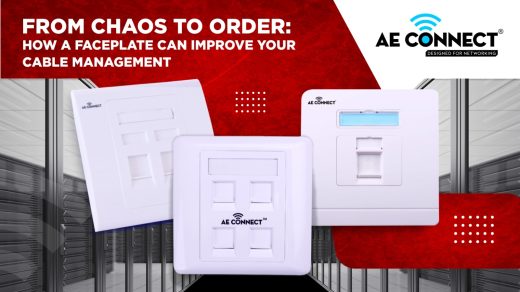RJ45 connectors are important parts in wired networks. They connect Ethernet cables to devices. They are known for having a standard layout. This helps make sure data connections are reliable and fast.
The connectors on RJ45 cables have just the right pin layout. This lets them work well in many places, from homes to big computer buildings. It’s important to know how these connectors are made. This helps use them to make wired networks that work well and stay working.
Types of RJ45 Connectors
RJ45 Connectors come in various types, each tailored to specific networking needs. Understanding these types is crucial for ensuring optimal connectivity in diverse scenarios.
1. Standard RJ45 Connector
The most common type features eight pins arranged in a single row. The connector is commonly used in Ethernet networking. It is compatible with most networking devices.
2. Shielded RJ45 Connector
This tool has extra covering to decrease electromagnetic disturbance. It works well in places with lots of electronic sounds. It makes the signal clearer in networks that need more work.
3. Strain Relief RJ45 Connector
The RJ-45 Connector is developed with a built-in pressure relief characteristic to furnish additional support to the cable. This decreases the chance of damage or disconnection induced by pulling or leaning. The connector provides a more strong and enduring connection.
4. Unshielded Twisted Pair (UTP) RJ45 Connector
Utilized in residences and industries. Cost-effective and eligible for low-interference atmospheres. The norm option for many Ethernet applications.
RJ45 connector color codes
RJ45 Connectors follow a standardized color-coding technique, which is important for sustaining thickness in wired networking. Understanding these color codes is important when terminating Ethernet cables, securing proper connectivity, and attaching to enterprise standards.
1. White with Blue Stripes and Blue
The primary pair, referred to as Pair 1, includes white wires with blue stripes and solid blue wires. This pair typically represents the transmitted data signals.
2. White with Orange Stripes and Orange
Pair 2, featuring white wires with orange stripes and solid orange wires, often denotes the received data signals in Ethernet connections.
3. White with Green Stripes and Green
Pair 3, comprising white wires with green stripes and solid green wires, is associated with transmitting data signals, complementing Pair 1 for balanced data transmission.
4. White with Brown Stripes and Brown
The final pair, Pair 4, is composed of white wires with brown stripes and solid brown wires. This pair is often used for auxiliary functions or as a spare in some Ethernet configurations.
Application of RJ45 Connectors
RJ-45 Connector, versatile in their design, finds across-the-board applications across different networking scenarios. Understanding the diverse applications of these connectors is fundamental to optimizing their usage in various atmospheres.
1. Home Networking
In residential locations, RJ45 Connectors play a crucial part in establishing wired connections for residence networks. They facilitate dependable and high-speed data transmission between appliances such as computers, gaming consoles, and smart TVs.
2. Commercial Networking
RJ45 Connectors are extensively used in commercial environments to establish wired networks within offices and corporate spaces. They provide stable connections for computers, printers, and other networking equipment, ensuring efficient data flow in professional settings.
3. Data Centers
Within the complex infrastructure of data hubs, RJ45 Connectors are instrumental in interconnecting servers, switches, and other networking elements. Their standardized layout authorizes for seamless integration, donating to the overall efficiency of data hub procedures.
4. Industrial Applications
In industrial locations, RJ45 Connectors are utilized to establish strong connections for machinery, control systems, and automation appliances. Their durability and dependability make them eligible for demanding industrial atmospheres.
5. Telecommunications
RJ45 Connectors are generally utilized in telecommunications for connecting networking tools, routers, and switches. Their all-presence and compatibility contribute to their comprehensive use in telecommunication networks, providing compatible connectivity for voice and data transmission.
Future trends with RJ45 Connectors
As technology evolves, future trends with RJ45 Connectors are influenced by the ongoing demand for higher data speeds, increased bandwidth, and emerging networking technologies. Some key trends include:
1. Higher Data Rates
Future connectors are anticipated to support quicker data velocities due to the emergence of technologies like 10 Gigabit Ethernet (10GbE) and beyond. This will facilitate quicker and more efficient data transmission.
2. Power over Ethernet (PoE)
Power over Ethernet (PoE) integration is becoming increasingly famous. RJ45 Connectors are anticipated to be enhanced to support elevated ability levels. This will facilitate the transmission of data and capacity over the same cable for devices such as cameras, access points, and IoT gadgets.
3. Compact Designs
As devices become smaller and more compact, there is a trend toward developing smaller form factor RJ45 Connectors. These connectors maintain performance while accommodating the space constraints of modern devices.
4. Enhanced Shielding
With the increasing preponderance of electronic instruments, improved shielding in RJ45 Connectors is anticipated to become more important to underrate electromagnetic interference and conserve signal integrity.
5. IoT Connectivity
The advancement of the Internet of Things (IoT) requires versatile connectivity solutions. The connectors may be developed to subsidize the diverse connectivity provisions of IoT appliances, providing seamless integration into existing networks
Moving ahead with RJ45 Connectors
AE Connect stands as a crucial aspect, guiding us through the difficulties of the wired world with accuracy and versatility. As technology advances, these connectors adjust to higher data speeds, Power over Ethernet needs, and compact designs.
Their continued evolution ensures they remain vital components, seamlessly interconnecting devices in our interconnected landscape, providing the backbone for efficient data transmission across homes, offices, and data centers. Do visit our website https://aeconnect.co.in/ for any queries.
Conclusion
To wrap up, RJ45 connectors exemplify exactness and flexibility in the wired world. Whether in homes or large industrial facilities, their trustworthiness stays essential. As innovations progress, these connectors modify to accommodate faster data transmission speeds, incorporate Power over Ethernet (PoE) abilities, and utilize compact structures, guaranteeing smooth digital communication across an assortment of networking situations.
From basic home systems to intricate commercial frameworks, RJ45 connections continue evolving to link all types of devices together seamlessly. Their long-standing reliability and consistent improvements allow networks of all sizes to operate efficiently regardless of technological advances in an ever-changing digital landscape.
FAQs
Can I use any RJ45 connector for my home network?
Standard RJ45 Connectors can be used as long as they are compatible. Ensure proper termination to maintain a reliable connection.
Do RJ45 Connectors come in different sizes?
No, they have a standardized size for compatibility. Crimp properly for a secure fit.
Can I use RJ45 cables for both data and power?
Power over Ethernet (PoE) support simplifies cable surveillance by disseminating both data and capacity.




